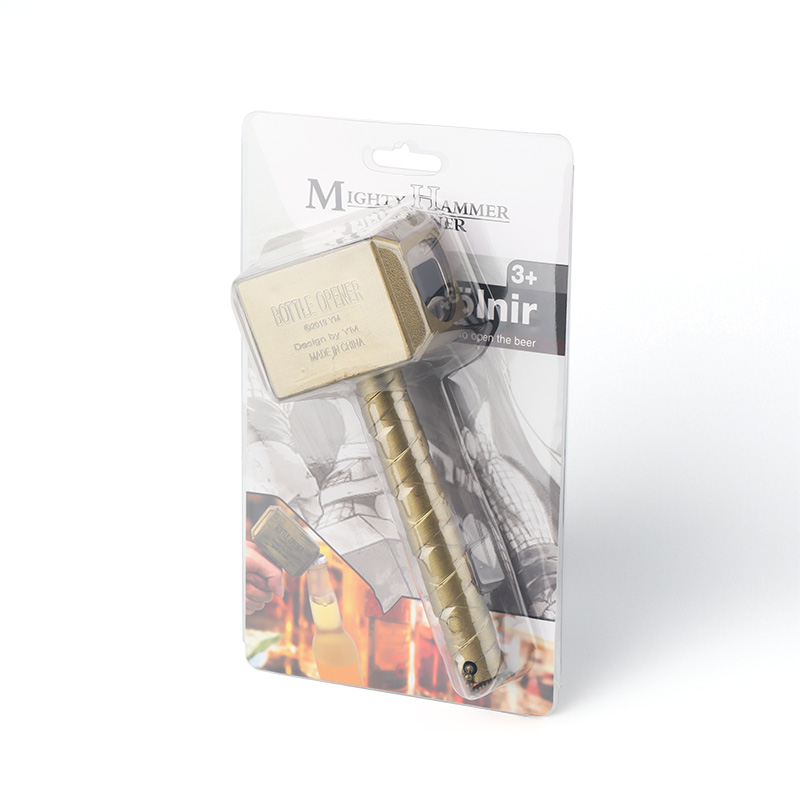Factors that affect blister packaging cost
One of the primary factors that affect the cost of blister packaging is the type and quality of the material used. Blister packs can be made from a variety of materials, including PVC, PET, and recycled materials. The cost of these materials can vary significantly, with higher-quality and more sustainable options typically being more expensive. Additionally, the complexity of the blister pack's structure can also impact the cost, with multi-layered options being more expensive than simpler designs.

The size and shape of the product being packaged also play a significant role in determining the cost of blister packaging. Customized blister packs are more expensive than standard sizes, and the shape of the product can also impact the cost. Irregularly shaped products may require more complex blister designs, which can drive up the cost. Additionally, larger products may require larger blister packs, which can also be more expensive.
The quantity of packaging needed is another important factor in determining the cost of blister packaging. Larger quantities often result in lower costs per unit, as manufacturers can take advantage of economies of scale. Conversely, smaller quantities may be more expensive per unit, as manufacturers may need to charge a premium to cover the costs of producing smaller runs. Other factors that can impact the cost of blister packaging include the design and printing of the packaging, as well as any additional features, such as self-sealing options or eco-friendly materials.
The average cost of blister packaging
The cost of blister packaging can vary depending on various factors, including the volume of units ordered and the type of blister pack used. The cost per unit for blister packaging can range from $4 to $5 for a small volume classification of 1-10 units, while the cost per unit for a short run of 50,000 to 100,000 units can range from $0.08 to $0.11. Therefore, the cost per unit decreases significantly as the volume of units ordered increases.
The cost per order for blister packaging depends on the volume of units ordered and the type of blister pack used. For example, ordering at least 5,000 units can result in a lower cost per unit, but the total cost per order would still be around $1.65. This is because blister packaging involves the use of custom-made sealing trays, which can cost anywhere from $200 to $250 per tray, depending on the design. This cost is a one-time expense that is added to the total cost per order.
The cost for custom design is another factor that can impact the total cost of blister packaging. Custom design tooling or stock sizes can result in $0 tooling costs, but the cost of materials and finishing will still need to be considered. The cost of materials and finishing can vary depending on the type of blister pack used, with foil labels with a paper layer costing around $126.02 for 100 sheets in a carton. Vacuum-formed PET blister clamshell packaging can cost between $0.22 to $0.35 per unit. Blister cards and clamshell packaging header cards can cost between $7,500 to $90,000 for 1,000 pieces, depending on the volume of units ordered. In conclusion, the cost of blister packaging can vary depending on the volume of units ordered, the type of blister pack used, and the cost of custom design. It is essential to consider all of these factors when determining the total cost of blister packaging for a product.
Ways to reduce blister packaging cost
One of the most effective ways to reduce blister packaging costs is by using standardized packaging. Standardized packaging is pre-designed and readily available, eliminating the need for custom packaging designs that can be expensive. By using standardized packaging, manufacturers can save on design and tooling costs, as well as reduce the time and resources needed for production. This can lead to significant cost savings, especially for small and medium-sized businesses that may not have the resources to invest in custom packaging designs. Additionally, standardized packaging is often more widely available, making it easier to source from multiple suppliers and negotiate better pricing.
Another way to reduce blister packaging costs is by minimizing the packaging size. Smaller packaging sizes not only reduce material costs but also lead to lower shipping and storage costs. This can be achieved by optimizing the packaging design to fit the product more efficiently and reducing the amount of excess packaging material. Additionally, manufacturers can consider using thinner materials or alternative materials that are more cost-effective, such as PET or PVC, which can further reduce material costs.
Negotiating with packaging suppliers for better pricing is also an effective way to reduce blister packaging costs. Manufacturers can approach multiple suppliers and compare pricing to find the most cost-effective option. Additionally, suppliers may be willing to offer discounts for bulk orders or long-term contracts. Manufacturers can also consider partnering with suppliers to develop packaging solutions that are tailored to their specific needs, which can lead to lower costs and improved efficiency. By exploring different pricing options and negotiating with suppliers, manufacturers can significantly reduce their blister packaging costs while maintaining quality and functionality.
Сопутствующие товары






















